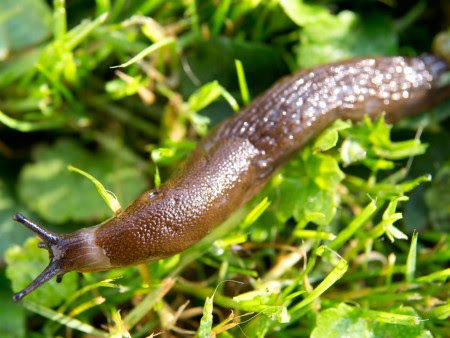By Alayna DeMartini
Something very small has benefited from the heavy rainfall that has played havoc with field crops statewide: the slimy and frequently hungry gray garden slug.
Planting corn and soybeans early sometimes helps reduce the amount of damage from slugs because the crop has a chance to outpace the growth of the slug, whose appetite increases as it matures, says Kelley Tilmon, a field crop entomologist with Ohio State University Extension.
But with above average rainfall across the state and some late-season frosts, a significant number of farmers are planting — or replanting — corn and soybeans later in the growing season. And those emerging plants are tasty meals for the slithering bandits.
This spring and summer might just offer the perfect conditions for slugs, including the gray garden slug, the species that typically creates the biggest problem for growers of field crops, Tilmon said.
“We get the worst problems when we have very small plants combined with large slugs because they’re out there happily feeding on them,” Tilmon says. “That’s a bad combination.”
Slugs tend to build up in fields that aren’t tilled, where they’re protected by the leftover remains of past years’ crops, Tilmon says. During the day, slugs can seek cover under past crop residue, taking advantage of the shade and extra layer of moisture. At night, they feast. Not only are the emerging plants vulnerable to slugs, but slugs can chomp away at seeds as well.
They are not picky eaters and are willing to devour pretty much anything they can crawl onto: corn, soybeans, grain, forages and even weeds if a field does not have any crops growing on it.
One of the more significant pests for Ohio’s soybean and corn growers, slugs can be easily overlooked in a field, says Andy Michel, an OSU Extension pest expert.
Their eggs are slightly smaller than a BB and blend in well with the soil, Michel says. After hatching, they hide during the day, venturing out at night to seek food. As a result, a farmer may not be aware of the number of slugs in a field until after the damage is done.
“I’ve seen holes in soybeans, gaps in rows and fields that needed to be replanted because of slugs,” Michel says.
They do the most damage in late spring and early summer.
“If you go out at dusk or after sunset with a flashlight, you might find them in the act,” Tilmon says.
Besides holes in leaves, slugs can leave behind their trace, a trail of clear slime that shines when it dries.
Like uninvited guests, slugs can be tough to get rid of.
Growers should scout for slugs, particularly in areas where weeds thrive or where there are a lot of remnants of past years’ crops.
A no-tiller with a serious slug problem can apply a pesticide with an active ingredient of either metaldehyde or chelated iron, Tilmon says. Insecticides do not kill them because slugs aren’t insects — they’re mollusks.
One way to tell if a field has a slug problem is by leaving asphalt shingles in various parts of the field — ideally white ones that won’t attract the heat as much during the day — but will draw slugs if they’re around, Tilmon says. A grower can flip over the shingles and get an idea of how many slugs are hiding out in their field, then decide what to do about them.
For more information, visit: go.osu.edu/slugsoncrops






